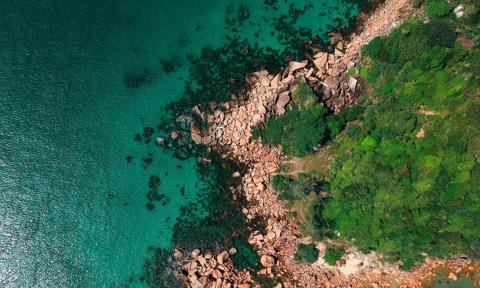
We’ve all wondered about the origins of Earth’s continents and what makes them so unique. Well, hold on to your hats because a groundbreaking study is shaking up the scientific world! Researchers Elizabeth Cottrell and Megan Holycross have taken on the challenge of unravelling the mystery behind our planet’s dry land, and what they found will blow your mind.
Picture this: Earth’s surface, vast and diverse, with continents that allow life to flourish unlike any other planet in our solar system. But how did this all come to be? Traditionally, scientists believed that the lower iron content and higher oxidation levels of continental crust compared to oceanic crust were responsible for its dry land properties. However, Cottrell and Holycross have just thrown a curveball at this widely held theory.
Their study, recently published in the prestigious journal Science, takes us on a wild ride through laboratory experiments that challenge the popular explanation proposed in 2018. Brace yourself for this revelation: the iron-depleted, oxidised chemistry found in continental crust likely did not come from the crystallisation of garnet as previously thought. Mind. Blown.
So, where does this chemistry come from then? The answer lies deep within the Earth, at what scientists call continental arc volcanoes. Imagine a subduction zone where an oceanic plate dives beneath a continental plate, creating an explosive mix of magmas. It is here, at these fiery hotspots, that the building blocks of a new continental crust emerge.
In the garnet explanation, scientists believed that the crystallisation of garnet in these magmas sucked out the non-oxidised (or reduced) iron from the terrestrial plates, leaving behind an iron-depleted and oxidised continental crust. But Cottrell and Holycross have shattered this notion, paving the way for a fresh perspective on the formation of dry land.
So, if you’ve ever wondered why continents proudly stand above the ocean’s surface while oceanic crusts remain submerged, it all comes down to density and buoyancy. Earth’s continental crust, with its low iron content compared to oceanic crust, is the key player in this remarkable phenomenon.
You see, the continents are less dense and more buoyant, causing them to sit higher atop the planet’s mantle. This buoyancy gives rise to vast stretches of dry land, while the oceanic crust quietly rests beneath the waves. But what causes this discrepancy in density and buoyancy? That’s where the garnet explanation comes into play.
In the past, scientists believed that the crystallisation of garnet deep beneath continental arc volcanoes played a crucial role in creating continental crust. It was thought that this process depleted the magma of iron, making it less dense and more buoyant. However, Cottrell had a hunch that something didn’t quite add up.
You see, garnet formation requires high pressures, but the low-iron magma was found in places where the crust wasn’t thick enough to generate such intense pressure. This inconsistency puzzled Cottrell and her colleagues, driving them to seek answers through rigorous testing.
To recreate the extreme conditions found beneath these volcanic arcs, Cottrell and her team embarked on a scientific adventure. They utilised impressive piston-cylinder presses, resembling mini fridges made of super-strong steel and tungsten carbide. These mighty machines applied tremendous pressure on tiny rock samples, no larger than a cubic millimetre. Surrounded by insulators and a cylindrical furnace, the samples endured mind-boggling temperatures and pressures similar to those beneath volcanoes.
The breakthrough came when Cottrell and her partner, Megan Holycross, developed cutting-edge techniques to measure not just the iron content, but also whether that iron was oxidised. Their findings shattered the garnet explanation, revealing that it was not the driving force behind the iron depletion and oxidation in continental arc magmas.
This is a game-changer, folks! Our understanding of Earth’s crust has just taken a quantum leap forward. So next time you marvel at the beauty of a sun-drenched beach or hike through breathtaking mountains, remember that the secrets of dry land are more enigmatic and awe-inspiring than we ever imagined.






